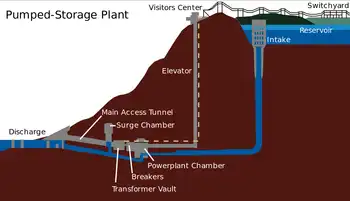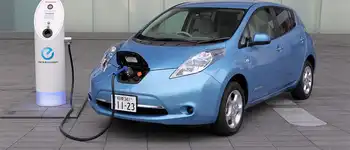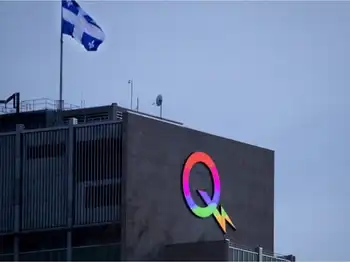Helping utilities operate more efficiently
By Investor's Business Daily
NFPA 70e Training
Our customized live online or in‑person group training can be delivered to your staff at your location.

- Live Online
- 6 hours Instructor-led
- Group Training Available
It has two sets of partners generating revenue from one set and sharing that revenue with the other. Here's how it works:
There are about 80 hours a year when electricity demand peaks. To keep lights shining and air conditioners humming during these periods, utilities must use their last 10% of generating capacity.
Sometimes that's not enough, causing brownouts or even blackouts. Should a utility build a costly generating facility or contract for emergency standby power just to provide for those 80 hours of peak use?
Enter EnerNoc, which substitutes efficiency for capacity.
EnerNoc lines up end users of electricity, hospitals, supermarkets, universities and light industrials.
It pays these institutions for the right to dim their lights and otherwise trim their electrical usage when demand is at a peak.
EnerNoc assembles a portfolio of potential electric cutbacks that it can deliver when a utility or grid operator is maxed out.
EnerNoc revenue comes from the payments it receives from utilities and grid operators for providing this demand-response service.
Complicated? Yes, but EnerNoc CEO Tim Healy describes the simple thought behind the complex business model: "Let's get paid to turn out the lights."
Healy is one of the co-founders of the company, which went public in May 2007.
Until last quarter, EnerNoc had not turned a profit.
But in its third quarter, EnerNoc plugged solidly into the black, thanks to revenue that lit it up for $103 million, up 134% over the prior year.
That quarterly sum nearly matched revenue for all of 2008, which came in at $106 million.
In 2006, EnerNoc had total revenue of just $26 million, so the company has clung to the fast track.
For all of 2009, EnerNoc raised guidance to a revenue range of $187-$189 million.
EnerNoc moved into the black as it began to realize the benefits of scale in its business. The company uses a metric that compares the ratio of megawatts under management with the number of full-time employees. At 8.8, that ratio climbed by 66% compared with the third quarter of 2008.
"Simply put, we are managing a steadily growing network of energy assets without commensurate growth in our head count," Healy told analysts in reporting third-quarter results.
This is a seasonal business. The summer months are where electricity use peaks. So while management was elated to turn its first profit, investors must realize that the company may still chart a rocky quarterly course with earnings. "As they continue to grow, you could still have losses in non-summer months, but smaller than in the past," said Jefferies analyst Paul Clegg.
The appeal of the EnerNoc business plan is simple.
"EnerNoc helps utilities avoid capital expenditures," noted Alex Morris, a research associate with Raymond James.
This appeal is enhanced as many utilities increase the share of power they derive from wind and solar. These renewable sources cut pollution, but they cannot be counted on to deliver at any given moment.
"You can't dispatch the wind or sun," said Healy. At moments of peak electric demand, wind and solar power might not be available. "So demand response becomes more valuable the more utilities are dependent of wind and solar."
Cutbacks in electricity through demand response has gotten less attention as an energy and pollution problem solver than renewable energy sources, such as wind, solar and geothermal. But new energy legislation could help companies like EnerNoc.
Many states require utilities to derive a fixed percentage of the electricity they generate from renewable sources. New federal proposals would create a national renewable requirement. The Waxman-Markey clean energy bill passed by the House would let utilities substitute efficiency gains for outright renewables generation.
Under Waxman-Markey, which has not won Senate approval, as much as 25% of the standard could be met with efficiency gains, says Healy.
"Energy efficiency can be an alternative to wind and solar. And it's cheaper," enthused Clegg.
He adds that the benefits of energy efficiency are not as dependent on government support as are renewables.
"A lot of (renewables) plays are subject to negative disruptions from policy changes such as diminished subsidies," he explained.
The end users who sign up with EnerNoc can draw a number of benefits. First, they are paid to let EnerNoc reduce their electric consumption during peak usage periods. Second, they realize the savings from such use. EnerNoc claims it can deliver further benefits to end-user partners through added services. Such services also promise new revenue streams for EnerNoc.
Most promising is a service clumsily dubbed monitoring-based commissioning.
This essentially lets EnerNoc monitor every node of electrical use in an end user's infrastructure.
"We analyze the way energy is used at the end-user facility: air conditioner by air conditioner, light by light," said Healy. Such detailed analysis of energy use can serve as the basis for more efficient electric consumption.
In August, EnerNoc signed up Northwest Community Hospital in Illinois as a customer for this service. Currently, estimates Healy, this service accounts for "less than 5%" of EnerNoc revenue.
He predicts that will rise sharply. "We project it could be 10% to 25% of earnings per share within five years," he said.
That rapid growth is consistent with the CEO's overall buoyant optimism. He expects EnerNoc to do over $250 million in revenue next year and then "quickly close in on $1 billion."











